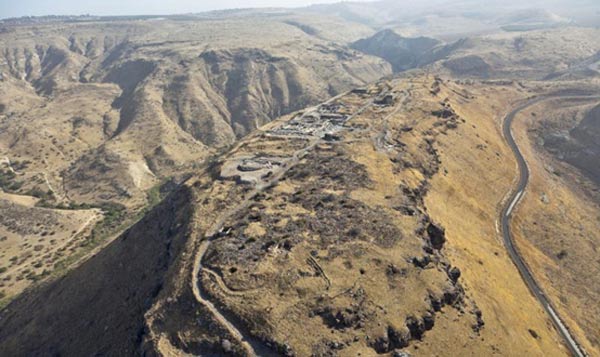Archaeologists find evidence of devastating ancient earthquake in mountaintop city of Hippos
Archaeologists have found dramatic evidence of an earthquake that struck a mountaintop town overlooking the Sea of Galilee over 1,700 years ago. According to Discovery News, researchers found a number of skeletons that had been crushed under a collapsed roof when the disaster hit the region in 363 AD.
The discovery was made in the ancient city of Hippos, known as Sussita in Hebrew, which is located in the northern region of what is now Israel. It is likely that Hippos, on a very defensible site along the border lines of the 3rd century BC, was founded as a border fortress for the Ptolemies.
The city was then established by Seleucid colonists in the 2 nd century BC and grew to become a powerful city-state that controlled two port facilities on the lake and an area of surrounding countryside. The city was part of the Decapolis, or Ten Cities, a region in Roman Jordan, Syria and Israel that were culturally tied more closely to Greece and Rome than to the Semitic ethnoi around. Hippos was improved with all the makings of a Greek polis: temples, a central market area, colonnaded streets, and other public structures.
However, in 363 AD, disaster struck Hippos when a powerful quake brought havoc and destruction. Until now, researchers had not found any clear archaeological evidence of the quake because another powerful earthquake struck the city on 18 th January, 749 AD, completely razing it to the ground and leaving the entire city covered in debris, never to be resettled.
“While the evidence of the final destruction are clear and dramatic, those of the 363 are less known and not as evident in the ruins of Hippos,” said Michael Eisenberg, director of the Hippos-Sussita project, an international enterprise affiliated with the Zinman Institute of Archaeology at the University of Haifa. “The reason is rather simple. The city was rebuilt and some of the ruins cleared while others were buried as new building enterprises took place,” he added.
The evidence for the 363 AD earthquake was found in the old Basilica, the largest structure of the city. Built at the end of the 1st century AD during the peak of Roman building in the city and the region, it served as marketplace and main seat of the judge. Under a collapsed roof in the northern section of the Basilica, archaeologists found the skeletons of people crushed in the collapse.

The remains of the Basilica in Hippos, Israel. Credit: Hippos-Sussita Excavation Project
Archaeologists were able to determine that the skeletons were from the 363 AD earthquake and not the later one because of coins found trapped between the basilica floor and some architectural elements made of marble.
“The latest of those coins dated to 362 A.D. About three feet above the debris of the basilica we found Early Byzantine rooms dated by dozens of coins in the floors themselves to 383 A.D.,” Eisenberg said.
Researchers also found the remains of a woman with a spectacularly-preserved golden pendant in the shape of a dove.

The golden dove pendant found next to the remains of a woman who had been crushed by a collapsing ceiling in the Basilica. Credit: Michael Eisenberg
In addition to the Basilica, the earthquake also destroyed the Roman baths located on the southern mountain cliffs. “Under the debris of the 363 earthquake we found part of a Roman statue. Superb Roman craftsmanship in marble, but just the right leg of a muscular man leaning on a trunk was found,” Eisenberg said. “We do hope to find additional parts next seasons once we clear the debris of the earthquake. Like the basilica, this bathhouse was never rebuilt.”

The southern bathhouse at Hippos. Credit: Hippos-Sussita Excavation Project
Featured image: An aerial view of Hippos. Credit: Hippos-Sussita Excavation Project




















Comments
the dove pendant is quite beautiful. i'm sure the event was terrible! i wonder if anyone survived?
love, light and blessings
AB